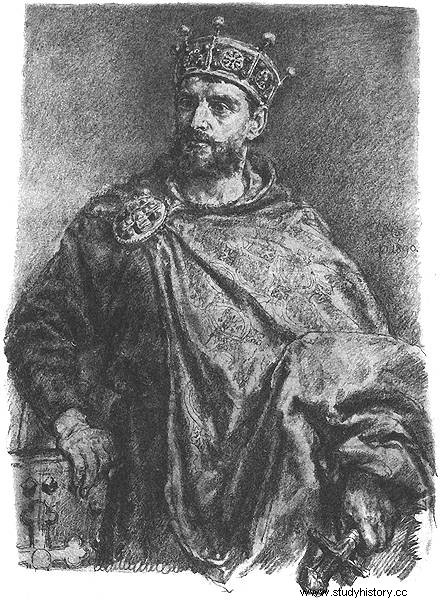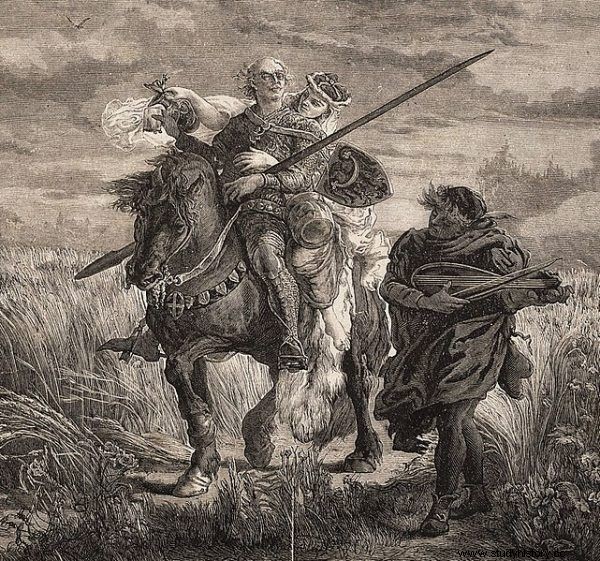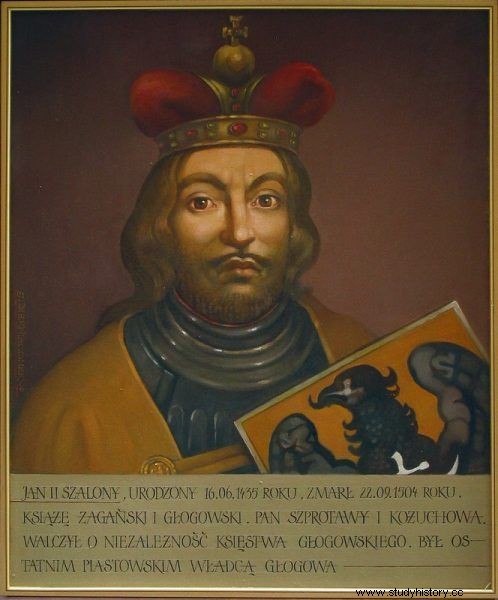The history of Polish rulers is conquest, conspiracies, plots, diplomatic alliances, political strategies ... betrayals, romances and love. Many kings, princes and magnates went down in history for exceptional achievements, but also for specific features of character or appearance. Hence, we know Brave, but also Łysy or Crazy. What stories are associated with giving the most interesting nicknames of Polish rulers?
Let us pay attention to an important matter. A nickname can stick to someone, you can get some extra money, you can also give it to someone or baptize it. Nicknames could be witty, playful, malicious, but also indicate admiration and respect for the rulers. What stories were recorded under some of the nicknames?
Bolesław I the Brave, which means brave
The first crowned king of Poland, a representative of the Piast dynasty, and for a short time also a Czech prince. Known as a righteous and just ruler, whom we associate for example with the Gniezno Congress, when Emperor Otto III, after praying in the cathedral for Saint Adalbert, met with the then prince Bolesław. During the meeting, Otto put a tiara on his head and handed over a copy of the spear of St. Maurice.
But the attributes of power and holiness are not enough. The Piast ruler appeared in numerous sources, just to mention the "Kwedlinburskie Annals", "Chronicles of Thietmar" or "The Life of the Five Male Brothers". Because the brave is, after all, brave, brave, brave, heroic, in a word - brave. The nickname Chrobry was given to him during the reign of his son, Mieszko II.
Mieszko II Lambert, or the ruler of the Sloth
He started as a king, he ended up as a prince, hence the son of Bolesław the Brave and Slavic Emnilda is sometimes also known as lazy - and not only Lambert. Jan Długosz, a historian and chronicler, wrote about him as follows:
He turned out to be a man of indolent character, dull mind, clumsy, unreasonable in counsel, weak in action, not fit for greater matters.

Mieszko II Lambert
Because although Mieszko II organized successful expeditions, including to Saxony, he was also able to repel attacks by Czech troops or princes from Kievan Rus, was also the first Polish ruler who could read and write, there is a persisting belief that his rule did not belong to be too successful.
It should be remembered, however, that his brothers who were plotting against him did not facilitate the rule of the kingdom. In the chronicle of Gallus Anonymus, however, we can find a note that Mieszko II Lambert "was a noble knight (...), but he was no longer distinguished, like his father, by the advantages of life, or customs, or riches".
Kazimierz Wielki - the last, perhaps the greatest of the Piasts
A powerful ruler who - as we remember well - "found Poland wooden and left it bricked". The youngest son of Władysław Łokietek and Jadwiga Bolesławówna, who was able to maintain good relations with the Kingdom of Bohemia, but also with the Teutonic Order, went down in history in a sense as the chief architect - because he created about a hundred new cities, and fortifications were also strengthened, and additionally, he also established the Krakow Academy.
The name Great came to be defined mainly at the turn of the 15th and 16th centuries. Because you need to know that the nickname "Magnus" (from Latin, meaning "big, big, huge, substantial, extensive) does not appear in sources contemporary to Kazimierz. And although he was a ruler who also aroused moral controversy - the chronicler Jan Długosz accused him of dissolute living and maintaining brothels - history remembered him primarily as a great ruler.
Bolesław II Rogatka, but also Łysy and Cudak
Bolesław II was the eldest son of the Silesian prince Henry II the Pious and the Czech princess Anna, who during his life (1220-1278) could boast, among others, the title of the prince of Kraków, Silesia and the administrator of part of Greater Poland. Jan Długosz mentioned him in the following words:
A man of fierce mind, harsh with his own and strangers, entangled in lewd love with a harlot until his death, his speech was so swift and flawed that he often made his listeners laugh.

Bolesław II Rogatka
Because he was not a ruler who would follow the path of honor, which as a child was said to be playing tricks. Known for his audacious nature, impetuosity and exceptional temperament towards women, he is also responsible for political murders. Interestingly, however, he was probably the first to organize a full-fledged knightly tournament on Polish soil, which was organized in Lwówek in 1243.
Mieszko I also known as Plątonogi
Another prince from the Piast dynasty, formal governor of Silesia, Racibórz and Opole, the second most senior son of Władysław II the Exile and Agnieszka from the Babenberg family, who spent his childhood - which we should remember thanks to his father's nickname - in exile in the family estate of the Hohenstaufs in Saxon Altenburg.

Mieszko Plątonogi
We learn about his nickname from a vintage named Sędziwoja from Czechło. N It is not known, however, whether the term was meant to mean his awkwardness or a more serious nerve damage, as a result of which Mieszko was able to move around in a non-clumsy manner due to his disability . Perhaps it would be more accurate to refer to him as Laskonogi, due to the fact that he was characterized by high debts, but you do not need to look far, because in Polish chronicles we will also find a ruler with such a nickname.
Władysław III Laskonogi
Duke of Greater Poland, but also of Krakow, son of Mieszko III the Old and Eudoksja Izjasłówna, a Russian princess. His political life was extremely turbulent, because it coincided with the breakdown of the districts, hence Władysław III sat on the throne of Krakow in 1202, 1227, and also in 1230. Said attempted to reactivate the statute of Bolesław Krzywousty, establishing a trinity of the Piast princes together with Henryk Brodaty and Leszek Biały.
After the chronicler Jan Długosz, it is assumed that the nickname referred to Władysław's long, absurdly thin legs, on which he could not bear the burden of power . Because Władysław is mainly spoken of as a weak, inept politician.
John II of Żagań who was Wild and Crazy
We know that Jan II (1435-1504) was the youngest son of Jan I Żagań and Scholastyka Saxon, who was orphaned by his father at the age of four. He had to fight for family influence with his older brothers - Baltazar and Rudolph. He did not tolerate any opposition, he was impetuous, as the members of the city council of Głogów found out, which Jan - called Dziki - decided to lock up in the castle tower, where officials died of starvation .

John II the Mad
He ruled ruthlessly because he did not lack ambition - he believed that the end could justify the means. Apparently, at the end of his life, when he was deprived of political and military means to fight, as the master of a small area of Wołowski, he began to be interested in alchemy, looking for a way to make gold, hence known as crazy, perhaps also inventive.
Sluggish, brave, honorable, bald and crazy ... these are of course not all the nicknames of Polish rulers and princes, which we will deal with on the pages of our website. The history of the Polish crown is about conquests, conspiracies, conspiracies, and the struggle of clashing characters, from which the most surprising nicknames were derived. More of the story soon!
